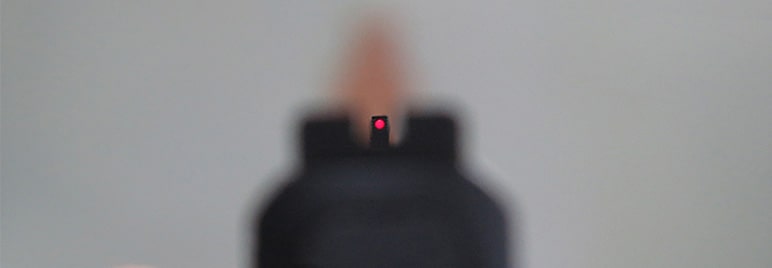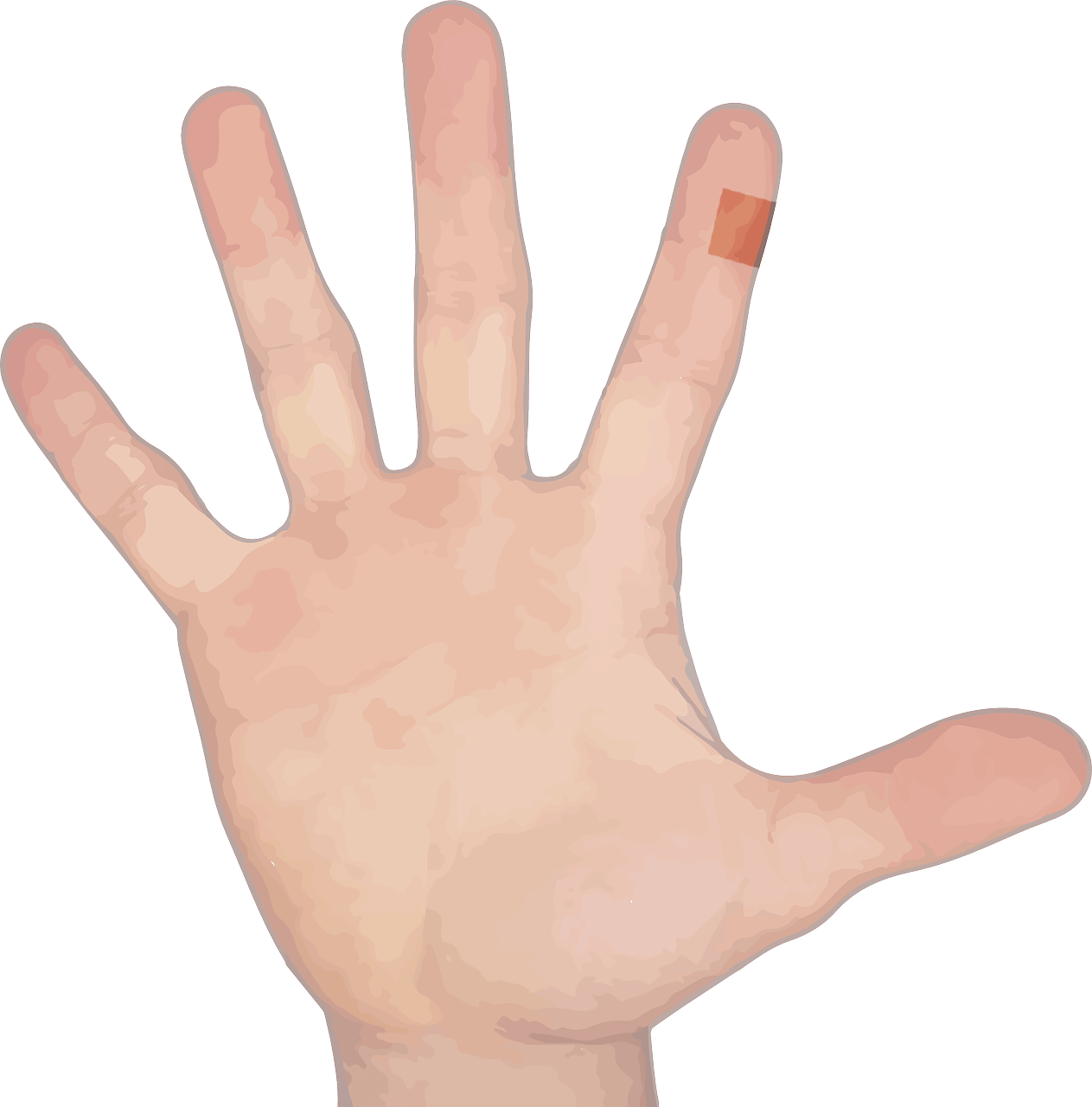How to Perfect Your Pistol Trigger Press [for Free]
 Bryan Hill / January 20 2024
Bryan Hill / January 20 2024
Want to:
-
Tighten your groups at the range
-
Hit targets at 25 yards or longer
-
Gain one of the keys to accurate speed shooting
You do? Great news! If you already have a gun, you can do it at home, for free, right now.
On this Page:
- Setup for Dry Practice
- Will Dry Practice Hurt My Gun?
- Gripping the Pistol
- Sight Alignment
- The Trigger Press
- Common Faults
- Next Steps
- References
Setup for Dry Practice
A "dry" gun is unloaded, and dry practice uses a dry gun.
Choose a dry practice area. It can be in your living room, bedroom, etc. For this exercise, you just need a plain wall to point at.
Unload your pistol, and place your ammo somewhere away from your dry practice area.
During dry practice, continue following the 4 rules of gun safety.
If you ever have to leave your gun unattended, re-check it to verify it's still unloaded.
Will Dry Practice Hurt My Gun?
Dry practice will not damage modern guns, except for:
-
Some guns chambered in .22 Long Rifle (.22lr)
-
Some guns made before 1970
Does your pistol sound like one of those exceptions? Check the user manual and verify whether dry fire is safe for it.
If it doesn't say it's safe to dry fire, you'll need a snap cap (an inert/dummy round).
Load it in the chamber to practice dry and not damage your gun.

Left: Glock snap caps are solid plastic. Center: Tipton has a brass striking surface and a spring inside. Right: ST Action Pro has a recessed plastic primer.
Gripping the Pistol
Start with this foundation:
-
Shooting hand: Get the web between your thumb and index finger is as high on the grip as possible. No gaps!
-
Support hand: Put your index finger under the trigger guard.
Then roll the wrist forward 0-20º to get more of your hand on the grip.
-
Both hands: Turn or press your wrists toward each other.
It's enough so the base of your thumbs feel firm, but not enough to pull apart the bottoms of your palms.
Hold that tension constant anytime you prepare to fire, until you finish firing.
-
Both hands: Grip hard.
With your firing hand, dial it back just enough to use your trigger finger effectively.
Your support hand grips as hard as possible. When you put the gun down, there should be imprints of the grip on your hands where they touched the gun.
This will do for now. We will
improve the grip in another lesson.
Sight Alignment
For iron sights:

Front sight is vertically centered in the rear sight window.
Front sight and rear sight are horizontally level.
Focus on the front sight. If you can't do this due to bad eyesight,
a laser or a red dot (for compact and larger pistols) will bypass this issue.
The Trigger Press
What part of your finger do you use on the trigger? Start with somewhere between the middle of its tip and the first joint.
Use the half of the finger closer to your thumb.
Clear as mud? Check the index finger in this diagram. The darker part is a good starting point:

If your finger can't reach the trigger comfortably, the pistol's grip may be too big for your hand, or its trigger reach may be too far out.
Try a different pistol, if you can.
The trigger press has 4 parts:
-
Slack: At first, the trigger is easy to press.
-
Wall: Once the Slack is out, the trigger becomes hard to press.
-
Break: After you press through the Wall, you'll hear and feel a click. If you had live ammo, the gun would fire.
-
Reset: How much to release trigger before it can Break again.
To test this dry, Break the trigger and hold it back.
Then pull the slideback an inch or two and let go of the slide.
Then slowly release the trigger and listen for the click. That click is the Reset.
Take the Slack out, then press straight back through the Wall.
Relax your last finger joint as you press.
The first joint does the heavy lifting.
To Reset the trigger, pull the slideback about an inch or two and release it.
This is what you'll see during a good trigger press:
You'll have some natural hand movement. We're human, not machines.
What's important is that you don't move the gun as a result of pressing the trigger.
What does that look like?
Common Faults
The following assume a right-handed shooter. Anytime it says the gun goes to the right, it will go left for a left-handed shooter.
Fault: Gun jerks to the right as the trigger breaks.
-
Cause: You're pulling too much with your second joint, next to the trigger.
-
Solution: Pull more with your first joint, closer to your knuckle.
Fault: Gun glides to the right as you press.
-
Cause: Your shooting hand's other fingers are squeezing as you press the trigger.
-
Solution: Set your grip firm before you start shooting, and keep it firm until you finish your set.
Fault: Gun jerks left as you press.
-
Cause: Too little finger on the trigger.
-
Solution: Try different placements of your finger on the trigger.
Try smaller grip panels. Try a smaller back strap on the grip.
Try a pistol with less trigger reach.
Fault: Gun jerks down as the trigger breaks.
-
Cause: Your index finger is pulling slightly down as you press. This won't really reveal itself unless you press the trigger hard.
-
Solution: Try using the upper half of your finger (like closer to your thumb).
Fault: Gun glides down before you press, and continues more as you press.
-
Cause: Anticipation of recoil. Your shooting hand's other fingers are squeezing as you press the trigger. Or your hands or wrists are moving the gun down.
-
Solution: Set your grip firm before you start shooting, and keep it firm until you finish your set. Master your grip technique and overcome your fear of recoil.
Next Steps
Top shooters can do a perfect dry trigger press in 0.20 seconds or less.
That's 5 (or more) shots per second!
If that sounds beyond you, it's not.
You can get there with a solid dry practice plan. To get started with dry practice, Learn how in this guide.
Start Leveling up with Dry Practice
Related Articles
Feedback
Are you happy with this page?
References
-
Skills and Drills Reloaded (2018)
-
DryFire Reloaded (2017)
-
Practical Pistol Reloaded (2016)
Disclaimer: As an Amazon Associate I earn from qualifying purchases, at no extra cost to you.